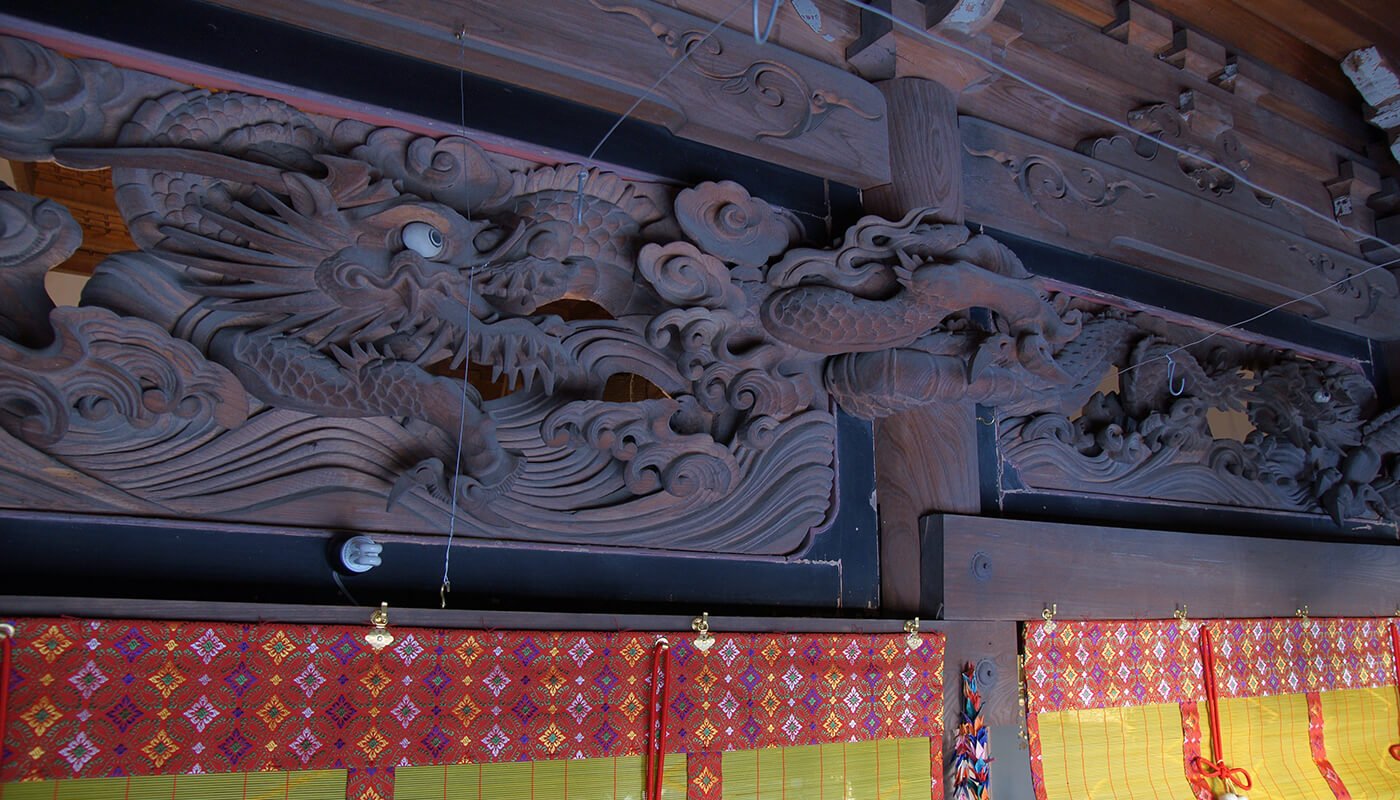Number 28Hōshō-ji temple
History of the temple
The history of the Hōshō-ji starts in 740 with a visit of Emperor Shōmu (701-756) in this area. The Emperor, being on his way to temporary palace in Asake, took a break in Maita village and ordered a construction of Hōshō-ji temple. To this day two areas 300m (984ft3in) west from the current temple’s site are still called Hōshō-ji and Dōmae (In front of the temple).
Hōshō-ji was an impressive complete seven-structured temple compound built in the middle of 28km2 (10.8mi2) terrain covered in dense forest. The temple enshrined Jūichimen Kannon (Eleven-Faced Kannon) as its main statue. The statue was carved by Ryōben (689-773) the founder of Ishiyama-dera temple in Ōmi province. For many years Hōshō-ji flourished and gathered devoted believers. Unfortunately it was burned down in 1568 during fights between Takigawa Kazumasu, a samurai retainer to Oda Nobunaga, and the troops of local daimyo. A small hall was built at the temple’s grounds but it burned down again in the fire that broke out in the winter of 1711. The Main Hall, which stands to this day, was built in June 1719 donated by the 6th daimyo of Kuwana province Matsudaira Tadamasa (1683-1746). To this day Hōshō-ji temple is very popular among the believers, who refer to it as Makita Kannon (Kannon of Makita).
Designated as Tangible Cultural Property of Yokkaichi city, 1977 October 6th
Temple’s treasure: The history of the Main Statue
The statue enshrined at Hōshō-ji is a Jūichimen Kannon (Eleven-Faced Kannon) carved by Ryōben. It was made at the same time as the statue of Kannon in Ishiyama-dera temple in Shiga prefecture. For a certain reason it was brought here to Hōshō-ji and has been worshiped here ever since. During the night of the 15th of February 1711 Goddess Kannon appeared in a dream of two people: Tangei of Chōmyō-ji temple and village headman Jingobē. She told them: There is a fire at the temple and the base of the statue is already starting to burn. Come quick and prevent the fire from spreading. After having the divination they suddenly woke up. They rushed to the temple and saw that the main statue was already entwined with smoke and couldn’t be seen. They wanted to put out the fire but there was no water to use anywhere around them. There was just one big bucket standing in front of the hall and the water started to flow from it continuously. They used the water to extinguish the fire and save the Kannon statue. Without question the water had to be sent by the Goddess. Both of them wept tears of joy.
Many more miracles happened at this temple but there is no space here left for them. Truly Goddess Kannon keeps her vow of great compassion and mercy. She clears away desire, ill will and ignorance of people, grants them happiness and long life. Kannon vowed to bring love and respect among people, grant long life, happiness and ease at present and in the future. I ask you kindly for a prayer.
The Main Hall is a 5.4m2 (58.1ft2) tall building with a hipped roof. It was registered as Yokkaichi city’s Tangible Cultural Property in 1977.

Outline
-
Honorific name
Ryūōzan
-
Temple's name
Hōshō-ji
-
Sect
Independent
-
Religious service
Jūichimen Kannon
(Eleven-Faced Kannon)





